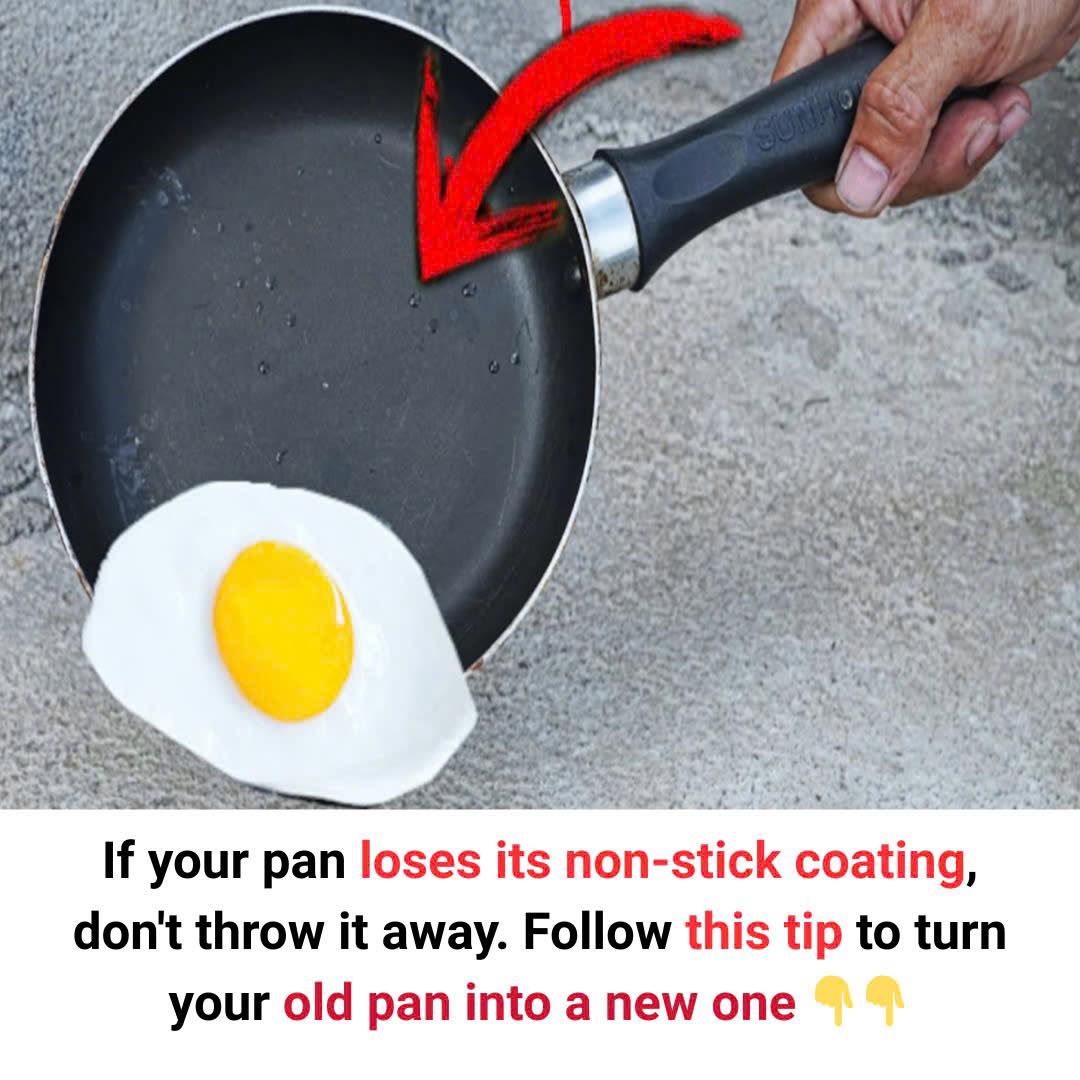
If your non-stick pan has lost its coating, don’t be too quick to discard it. There’s an easy and effective method to bring it back to life using common kitchen items.Allrecipes
Understanding Why Non-Stick Coatings Deteriorate
Non-stick pans are typically coated with materials like Teflon or ceramic to prevent food from sticking. Over time, several factors can cause this coating to wear off:Wikipedia+1Food & Wine+1
- High Heat Cooking: Exposing the pan to excessive heat can degrade the non-stick layer.
- Metal Utensils: Using metal spoons or spatulas can scratch and damage the coating.
- Abrasive Cleaning: Scrubbing with harsh pads or using strong chemicals can strip away the non-stick surface.
- Regular Wear and Tear: Even with proper care, the coating can naturally wear down over time.
Once the coating is compromised, cooking becomes challenging, and cleaning turns into a tedious task.Reddit+1SELF+1
A Simple Method to Restore Your Pan’s Non-Stick Surface
Before considering a replacement, try this straightforward technique to rejuvenate your pan:
Materials Needed
- Coarse SaltYouTube+3Allrecipes+3HexClad Cookware+3
- Cooking Oil (e.g., vegetable or olive oil)Wikipedia
- Paper Towels or a Clean ClothReddit+2Wikipedia+2Allrecipes+2
Step-by-Step Guide
- Heat the Pan: Place your pan on the stove over medium heat for a few minutes to open up the pores of the metal.
- Add Salt: Pour a generous amount of coarse salt into the heated pan. The salt acts as a gentle abrasive to remove any residue.
- Scrub the Surface: Using a paper towel or cloth, carefully scrub the salt around the pan’s surface to clean it thoroughly.
- Discard the Salt: Once done, discard the used salt and wipe the pan clean with a fresh paper towel.
- Apply Oil: Pour a small amount of cooking oil into the pan and spread it evenly across the surface using a paper towel.
- Heat the Oiled Pan: Heat the pan again on medium heat for a few minutes to allow the oil to bond with the surface, creating a natural non-stick layer.
- Cool and Wipe: Turn off the heat, let the pan cool, and then wipe off any excess oil with a clean paper towel.
This process helps in forming a seasoned layer on the pan, similar to how cast iron skillets are seasoned, enhancing its non-stick properties.
Maintaining Your Restored Pan
To ensure the longevity of your pan’s new non-stick surface:
- Use Appropriate Utensils: Opt for wooden, silicone, or plastic tools to prevent scratching.Wikipedia+4Made In Cookware+4ProWare Kitchen – ProWare Kitchen+4
- Moderate Heat: Avoid cooking on high heat to preserve the coating.Made In Cookware
- Gentle Cleaning: Clean with soft sponges and mild dish soap; avoid abrasive scrubbers.SELF+1ProWare Kitchen – ProWare Kitchen+1
- Regular Seasoning: Periodically repeat the oiling and heating process to maintain the non-stick layer.
When to Consider Replacing Your Pan
While restoration can extend the life of your pan, certain signs indicate it’s time for a replacement:
- Severe Scratches or Peeling: If the surface is heavily damaged, it’s best to replace the pan.Allrecipes+1learn.surlatable.com+1
- Rust Formation: Rust spots can compromise the pan’s integrity.
- Warping: A warped pan won’t sit evenly on the stove, leading to uneven cooking.
- Persistent Sticking: If food continues to stick despite seasoning, it’s time for a new pan.SELF
Benefits of Restoring Your Pan
- Cost-Effective: Saves money by extending the life of your existing cookware.
- Environmental Impact: Reduces waste by reusing instead of discarding.
- Enhanced Cooking Experience: Restored non-stick surfaces make cooking and cleaning easier.
- Healthier Cooking: Requires less oil, promoting healthier meals.Kitchen Seer+6Wikipedia+6ProWare Kitchen – ProWare Kitchen+6
In conclusion, before you decide to throw away your old non-stick pan, consider this simple restoration method. It’s an easy, cost-effective way to breathe new life into your cookware, making your cooking experience enjoyable once again.



